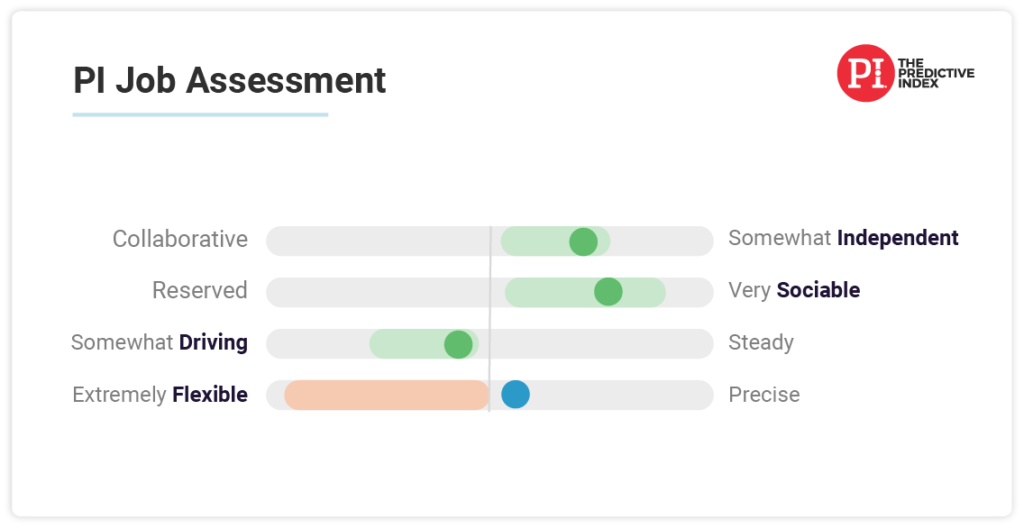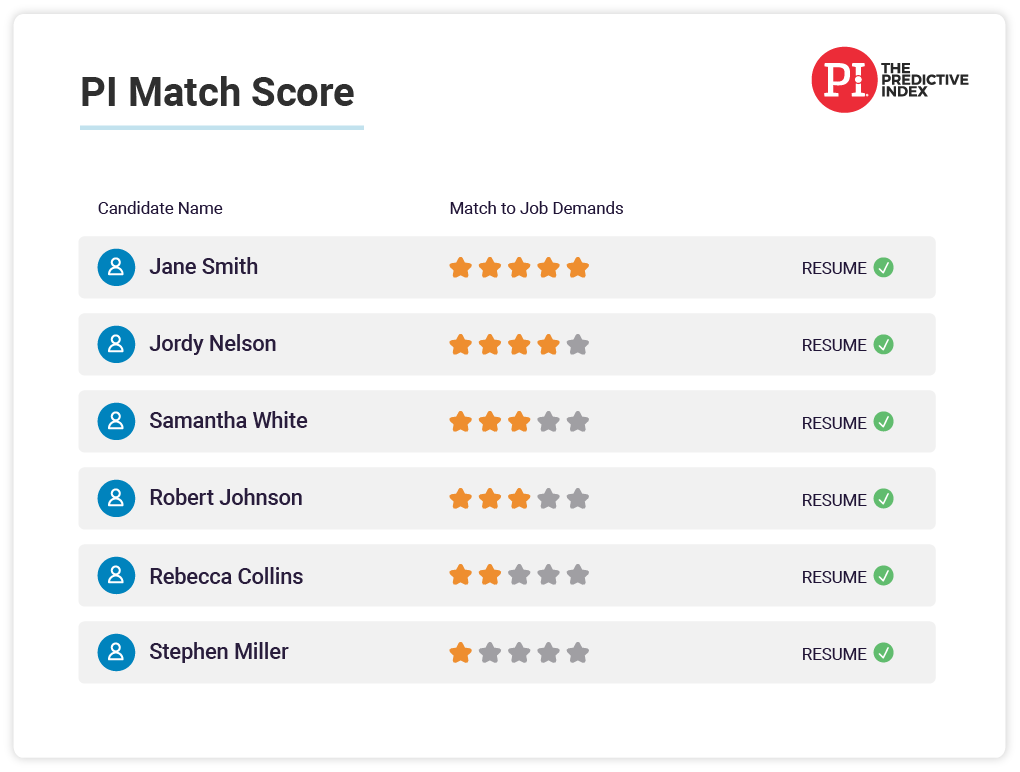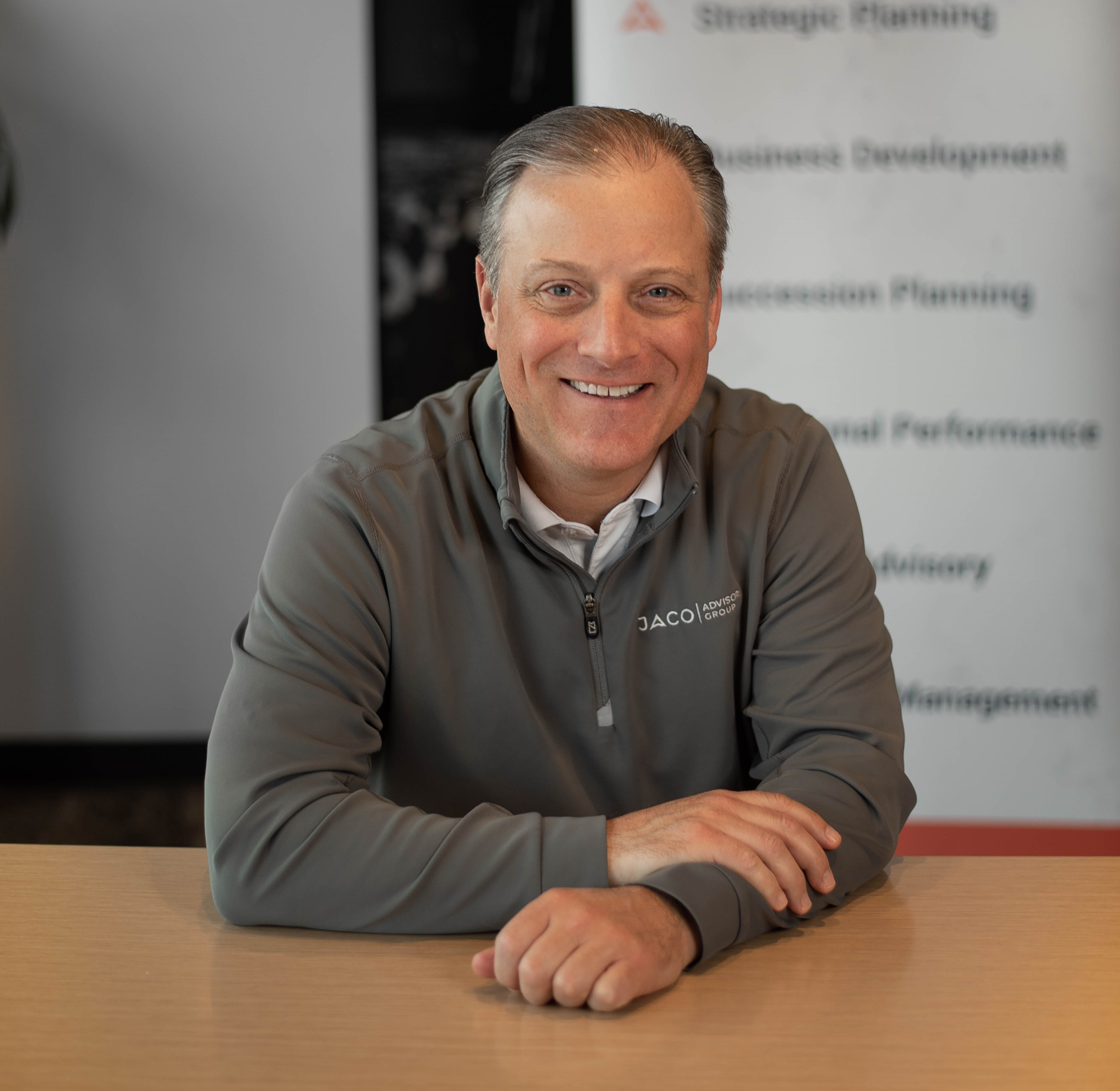The Hire Phase of Talent Optimization
A deep dive into how JACO helps clients reduce turnover and improve performance through implementing a more disciplined and streamlined hiring process.
Hiring in 2022 is challenging in every single industry.
But with better people data, it could be much easier.
Hiring is also one of the most important functions within a business, and optimizing that process can save you an enormous amount of time and money.
Bringing the right person to the right role can make all the difference when it comes to building teams filled with happy high achievers.
In this article we review how the Hire Phase of Talent Optimization can improve your company’s performance so that you can get more from your talent by hiring the right people for your organization.
Right Person, Right Seat
In business, getting the right people to the right place on your team is simple yet difficult.
Job fit and team fit are two key factors that affect employee engagement and productivity.
That’s why hiring the right people and finding them the right seat is so crucial to the success of your business.
Hiring Without People Data: The Standard Process
A standard hiring process consists of posting a job description and getting candidates to fill out applications.
Then, a manager or recruiter calls the candidates to express interest.
If the call goes well according to the individual judgment of the interviewer, the candidate is brought in for an in-person interview, followed by a second or third interview.
The leadership team would then check references before hiring the candidate that seems to be the right fit.
This approach is like buying a car without looking at the engine.
The Talent Optimization-Based Hiring Process
- Identify talent gaps in the organization.
- Define the job and its purpose.
- Develop a detailed job description and Job Target.
- Use analytics to discover hidden talents.
- Develop a process for evaluating candidates.
- Apply behavioral and cognitive assessments to evaluate hires.
- Restructure job duties or responsibilities based on results from testing.
With Hire, you can look for gaps in capability and capacity – and hire accordingly. You can better define the job role’s day-to-day responsibilities as well as its purpose in the bigger picture of the organization – then use that information to develop a detailed, inclusive job description and Job Target.
The standard hiring process does not allow for #6 (applying behavioral and cognitive assessments).
Some companies do use behavioral and/or cognitive assessments, but do not have a strong Job Target (#3), which means they may be inadvertently using the data to hire the opposite of their ideal candidates.
What is a Job Target, and Why Do We Need It?

The Job Assessment translates the required behaviors and abilities into Job Targets, bringing more objectivity to the hiring process.
A Job Target in hiring is analogous to the dartboard in darts: it shows you where to aim.
The Job Target is a set of behavioral and cognitive requirements for a job. It serves as criteria that can guide an individual or team to assess a candidate’s fit in a role.
It also serves as a helpful tool that can be used to assist managers in the hiring process and create a specifically tailored candidate pool.
This tool can save hiring managers time and energy by forming a clear picture of the requirements of the job and attracting candidates that match those criteria.
Measuring Cognitive Ability to Predict Job Performance
Implementing a Cognitive Assessment like the one provided by Predictive Index, built exclusively for workplace talent and candidates, provides much-needed insight into a person’s capacity to adapt, learn, and understand new concepts.
With that crucial information, you can compare their cognitive ability to the needs of the role and have a fuller picture of potential job performance than any standalone hiring criterion, including job experience.
Simply put, if hypothetically, you could only interview a candidate or know their educational background or know their job experience or measure their cognitive ability, you would experience more success with choosing cognitive ability.

As a Certified Partner of The Predictive Index, we help employers assess job matches more objectively.
Thankfully, modern hiring allows us to weigh all of these factors, plus their behavioral fit.
Find the best fits from your candidate pool, automatically
Don’t waste another minute on the wrong candidate. Automatically sort candidates based on the highest predictors of job performance–so you pass only the best candidates to your hiring managers.
Using The Predictive Index Behavioral Assessment JACO measures four key behavioral drives that predict workplace behavior:
- Dominance – the drive to generate and utilize influence on people or events.
- Extraversion – the drive to connect and interact with others
- Patience – the drive to deliver consistent and stable results
- Formality – the drive to follow structure and rules
The assessment also measures an individual’s tendency to be more objective or subjective when processing information and making decisions.
These four key behavioral drives illustrate a clear framework for understanding candidates and employees when it comes to workplace behaviors. This simple method of behavioral assessment, when paired with an understanding of skills and cognitive abilities, can significantly improve the hiring and promotion process.
About Jeff
Jeff has over 30 years of strategic planning, business development, and business transformation leadership experience. Having worked with mid-market, closely-held and family-owned businesses his entire career Jeff has a unique understanding of how these enterprises operate and the challenges they face.
He is passionate about working with business leaders to build strong cultures while developing and executing strategies that deliver exceptional results that benefit all the company’s stakeholders. Jeff’s hands-on approach to working with companies begins with a commonsense approach to strategy development.
With extensive experience in organizational turnaround and growth Jeff follows a defined process (disciplined, focused, intentional) to guide clients from strategy to execution. His experience covers a multitude of industries, with an in-depth understanding of automotive manufacturing.
Jeff holds a Master’s in Business Administration from the Capital University School of Management and earned a Bachelor of Arts in Business Administration and Management from Ohio Dominican University.



